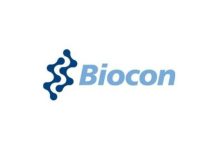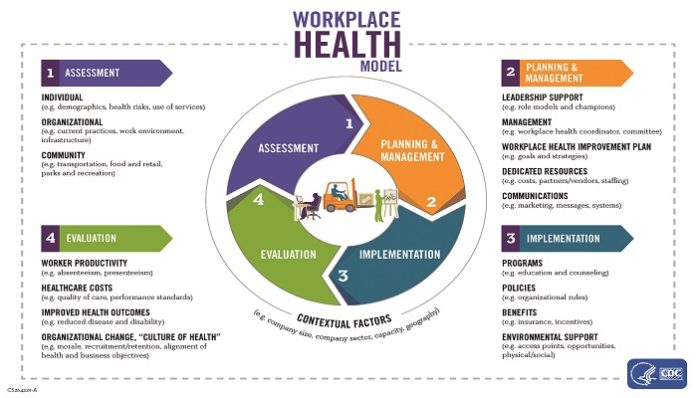Abstract
Not since the last 100 years has the world witnessed, a virulent, pernicious, deadly virus, the SARS-CoV-2, stealthily come up at first and then later break upon the entire world since 2019 end, from East to West and North to South in such severity and deadly manner. The last pandemic, the great influenza Spanish flu was in 1918, which killed nearly 50 million people and this pandemic, the covid, which is still unfolding, with its fast mutating variants has already killed near to 6 million in the world. There is not a single area of human activity from personal lives to businesses which have not been affected, one way or the other by this rampaging covid virus. It has forever changed the course of lives worldwide, in unprecedented and unimaginable ways and this spectre of gloom and death continues to hangover us like the Damocles sword.
However, human ingenuity, innovation and research and vastly improved medical infrastructure compared to what it was a 50 years back, has helped the great fight back as how human beings have fought and survived over the years, floods, famines, droughts and epidemics. As they say, “it’s the survival of the fittest.” And the “fittest” need not always be the physically strongest. The “fittest” are often the mentally strongest- the ones with the indomitable spirit to keep pushing forward, come what may! Our times present before us challenges which constantly wage war with our minds. This article is a handy compilation of useful strategies for HRs and managers for coping with crises in order to foster workplace resilience, to boost the “human resource” and prevent it from crumbling in times of distress.
Introduction
The Centers for Disease Control and Prevention (CDC) prescribes in it’s guidance, the role of businesses and employers in responding to Covid-19. While the CDC encourages employers and organizations to coordinate with the respective state governments to obtain accurate information from time to time, it provides strategic guidance to combat the virus at an organizational level, with the main focus on strictly following physical safety measures such as social distancing, wearing masks, placing physical barriers, prohibiting handshakes, delivering services remotely, use of electronic devices instead of physical cash for payment, avoiding gathering during peak hours, frequent washing of hands and sanitizing, frequent disinfecting of commonly shared surfaces and contact thermometers, placing physical barriers or use of signs and tape marks where person-to-person interaction is likely, use of PPE kit where required, self-isolation or quarantine for sick individuals or those with a sick household member with Covid-19, work-from-home schedules for employees in non-essential services, implementation of flexible, non-punitive paid sick leave and supportive policies in it’s systematic effort to control transmission. Other physical safety measures include conducting daily in-person or virtual health checks like symptom and temperature screening. The Aarogya Setu app mandated by the Government of India is a handy digital service for contact tracing, symptom mapping and self-assessment. Measures like these help detect and combat the virus at an early preventive level, thus keeping an already overwhelmed health care system from falling apart. A robust and strictly followed health care policy within the organization reduces spiraling health care costs, worker absenteeism, employee turnover, on the job accidents and disease spread. The CDC further recommends that all employers implement a well-tailored plan to meet the specific challenges faced by the individual organization with the ultimate agenda to prevent and reduce transmission, maintain healthy business operations and maintain a healthy work environment. Workplace policies are to be communicated with the team clearly, frequently and using multiple methods. This helps address misinformation spread on social media. The CDC’s workplace health model is a comprehensive approach to address the health and safety needs of the employees. The 4 step model comprising assessment, planning and management, implementation and evaluation helps uphold a robust system in place to combat the pandemic.
Employee Well-being and Workforce Resilience
“The most powerful weapon on earth is the human soul on fire”, Ferdinand Foch- the French general and military theorist who served as the Supreme Allied Commander during the First World War once rightly said. In the context of Covid-19, the global pandemic which shook the whole world is a reminder for us to buckle up and ensure that the physical and mental well-being of our workforce is not compromised if it is to survive future pandemics and catastrophes, which are now becoming a part of life- “the new normal” as one would call it. And the only way forward is to emerge resilient amidst it all.
Dr. Roger Walsh, professor of psychiatry and human behavior, philosophy and anthropology, and his work on “therapeutic lifestyle changes” (TLC’s) which appeared in American Psychologist, the flagship journal of the American Psychological Association, is now more relevant than ever before. TLC’s are a useful tool designed to help individuals enhance physical and mental well-being and lower elevated health risks. While it may not act as a direct “cure”, it definitely helps build both physical and mental resilience much required during a pandemic when people are stuck in their homes across a span of several months, an overburdened healthcare system and a shortage of medical supplies. The most common 8 TLC’s are:
1. Exercise: 30 minutes of daily exercise or physical activity increases fitness, vitality, stimulates endorphins, strengthens bones and muscles, prevents cognitive decline, improves energy levels, improves sleep and reduces risk of cardiovascular disease.
2. Diet: Improves immune system, increases energy and productivity, improves memory and concentration, stronger muscles and healthy lifestyle, longer lives and fewer ailments.
3. Spending time in nature: Reduces stress, enhances physical well-being, improves productivity, improves healing, increases general mental health, attention recovery and promotes healthy lifestyle.
4. Healthy relationships: Deep sense of love and belonging, security and confidence, improves mental health, fosters emotional support, increases mental well-being, happiness, empathy, companionship, instills a sense of shared problems and difficulties.
5. Recreation: Improves mental health, builds strong families and healthy communities, key to balanced human development and reduces self-destructive anti-social behavior.
6. Relaxation and stress management: 7-8 hours of sleep at night increases energy and alertness, boosts immunity, improves oxygen flow, pain relief, treats and prevents various diseases, re-energizes the brain and releases endorphins.
7. Meditation: Reduces stress, reduces aging, improves brain functioning, helps with sound sleep at night, increases immunity and helps fight diseases and increases attention span.
8. Service and altruism: An attitude of kindness and caring makes us happy, promotes social connections, increases hope, life satisfaction and sense of gratitude, improves emotional health and gives a sense of meaning and purpose to life.
While therapeutic lifestyle changes are to be practiced on a personal and individual level, every organization has a duty to create awareness about the same to ensure a robust and healthy workforce. While no one is immune to the effects of a pandemic, supporting and caring for each other during trying times is what helps the employee feel truly valued. Hence, it is important that the manager or HR ensures that all practice self-care. As a team, creating a safe space where each one could freely talk about their challenges and concerns while also validating and acknowledging those feelings can be an extremely therapeutic and rewarding experience. Feelings are never right or wrong. It is okay to panic during a pandemic. It is about what one does with it. That is, not to allow the anxiety to overwhelm you to the point where it makes the individual dysfunctional and unproductive. One should take steps towards managing the anxiety such as practicing meditation, limiting alcohol and caffeine which could aggravate anxiety and trigger panic attacks, getting enough sleep, counting to 10 slowly, talking to a friend or mental health professional, deep breathing, getting virtually connected with friends and family, going for a nature walk, houseplants, fresh air, etc.
The eight risk factors associated with work-related stress and ill health are work demands, lower levels of control, poor support from supervisors or co-workers, lack of role clarity, poorly managed relationships, low levels of recognition and reward, poorly managed change and organizational justice.
As a manager, watch out for the following general signs:
● Emotional response
● Erratic behavior
● Overly sensitive
● Irritable
● Angry
● Teary
● Tense
● Obsession with parts of the job
● Neglecting of parts of the job
● Disengagement
● Low morale
● Withdrawal behavior
● Increased absence (unplanned)
● Increased negative language
● Workplace conflict
● Appearing physically tired, headaches, etc
● Decline in physical appearance
● Reduced performance
Signs of disengagement:
● Absenteeism
● Discretionary effort
● Team-work affected
● Productivity reduces
● Work quality reduces
● Avoidance of team social interaction
Signs of burnout:
● Compassion fatigue
● Emotional exhaustion
● Reduced motivation
● Increased cynicism
● Negativity
● Sense of isolation
If you notice any of the above mentioned signs, then work towards building a truly healthy workplace using the LEADS Method: listen, empathize, ask, discuss and take steps.
● Create a work culture where everyone feels valued. Listen to their concerns. Check for understanding. Address them as much as possible.
● Empathize with their feelings. Not pity or sympathy. Develop listening and communication skills. Make an effort. Show them you care by words and actions.
● Have a routine check-in conversation. Ask them about their own and their family’s well-being. For example, “how’s it all going?”, “what has been a challenge for you?”, “how have you decided to handle that?”, “is there anything that we can do to help you?”. Maintain confidentiality.
● Ask questions to clarify what they want, what they need and what they expect to happen.
● Discuss the issues and problems at hand. Share solutions or guide them. Do a follow-up later.
● Refer to a mental health professional, if required.
● Speak openly about mental health. Set an example and talk about your own mental health. The goal here is to remind one another that “we’re all in this together”. Maintain confidentiality. However, if the individual is particularly uncomfortable or overwhelmed listening to such a sharing, respect them and let them refrain from such an activity.
● Provide them regular, honest and constructive feedback. No personal attacks.
● Acknowledge and appreciate them whenever possible, especially when someone goes out of their way.
● Create a positive environment. However, refrain from toxic positivity or being in a denial of reality. Give them realistic hope.
● Provide flexible work arrangements which would help reduce stress and manage anxiety.
● Give clarity on their job-related tasks.
● Provide skill-training when required. Overcome uncertainty and stress by skill building and task mastery.
● Frequently assess employee performance. Take note of increase or decrease in performance.
While the above mentioned strategies may come across as both time and energy consuming “if the employees come first, then they’re happy. A motivated employee treats the customer well. The customer is happy so they keep coming back, ..it’s just the way it works”, said Herb Kelleher, co-founder and late CEO and chairman emeritus of Southwest Airlines. The American Psychological Association’s Psychologically Healthy Workplace Awards Program lists the following benefits of a psychologically healthy workplace:
● Improved health and well-being
● Greater workforce resilience
● Increased employee morale
● Lower turn-over
● Better company culture
● Early problem solving
● Higher employee engagement
● Increased productivity
● Higher performance
● Lower absenteeism
● Increased team cohesion
● Decreased injury and compensation claims
● Increased job satisfaction
Finally, let’s keep the faith, hope and love. Believe that better times will come. This too shall pass. That is the law of nature.
References
- https://www.cdc.gov/coronavirus/2019-ncov/community/guidance-business-response.html
- https://www.cdc.gov/workplacehealthpromotion/pdf/WorkplaceHealth-model-update.pdf
- https://www.apa.org/news/press/releases/2008/10/fact-sheet.pdf
- https://www.safework.nsw.gov.au/resource-library/mental-health/mental-health-strategy-research/stress-tip-sheets/risk-factors-for-work-related-stress-tip-sheet-4
- https://adaa.org/tips

































